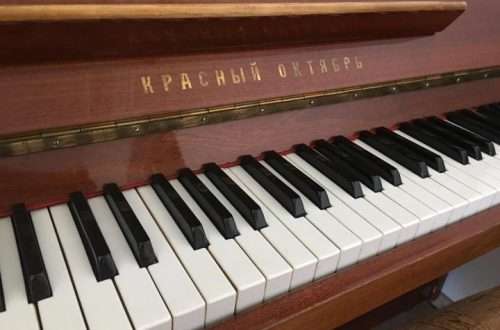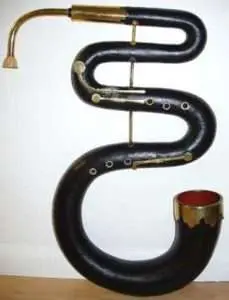
How to choose a banjo
Banjo is a stringed plucked musical instrument with a tambourine-shaped body and a long wooden neck with a fretboard , on which from 4 to 9 core strings are stretched. It is widely used in jazz .
Around the 17th century, it was exported from West Africa to the southern states of the United States, where it became widespread under the name banger, bonja, banjo. Initially, it had a body in the form of a flat drum open at the bottom with one leather membrane, a long neck without frets and with a head; 4-9 core strings were pulled onto the instrument, one of them was melodic and plucked with the thumb, the others served as accompaniment. The sound of the banjo is sharp, sharp, quickly fading, with a rustling tone.
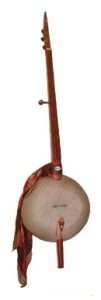
In this article, the experts of the store “Student” will tell you how to choose the banjo that you need, and not overpay at the same time. So that you can better express yourself and communicate with music.
Banjo device
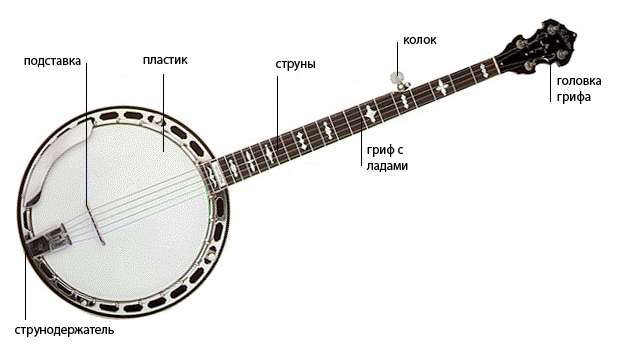
The tailpiece is the part on the body of a stringed musical instrument to which the strings are attached. The opposite ends of the strings are held and stretched with the help of pegs.
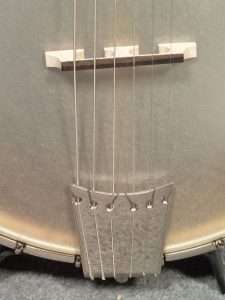
Banjo tailpiece
The wooden bridge rests loosely on the plastic-covered front surface of the banjo, against which it is securely pressed by string tension pressure. A separate metal tailpiece keeps the strings in order.
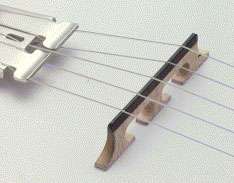
Stand
Frets are parts located along the entire length of the guitar neck , which are protruding transverse metal strips that serve to change the sound and change the note. Also fret is the distance between these two parts.
Fretboard – an elongated wooden part, to which the strings are pressed when playing to change the note.
Pegs (peg mechanism ) are special devices that regulate the tension of the strings on stringed instruments, and, first of all, are responsible for their tuning like nothing else. Pegs are a must-have device on any stringed instrument.
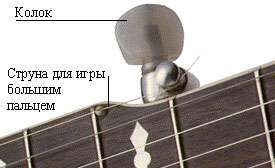
Peg
String for playing with the thumb. This string is fastened and adjusted by a peg located on the fretboard e. It is a short, high-pitched string that is played with the thumb. It is usually used as a bass string, constantly sounding along with the melody.
banjo body
Two traditional banjo body materials are mahogany and maple. Maple gives a brighter sound , mahogany is characterized by a softer , with a predominance of medium frequencies. But to a greater extent than the body material, the timbre is influenced by the ring (tonering), the metal structure on which the plastic (or leather) “head” rests.
The 2 fundamental types of tonering are flattop (the head is stretched flush with the rim) and archtop (the head is raised above the level of the rim), the archtop sounds much brighter and has long been the preferred option for Irish music.
Plastics
Mostly plastics are used without spraying or transparent (they are the thinnest and brightest). On loud and bright instruments, to get a softer sound, it makes sense to use thicker heads – coated, or imitating natural leather (Fiberskin or Remo Renaissance). On modern banjos, the standard head diameter is 11 inches.
How to choose a banjo
- The first thing you need to know is what a banjo is and how to use it. The banjo is an instrument similar to the guitar, but used for folk songs, dixieland , bluegrass , and more. Solo and group performances can be played on this instrument.
- When you buy a banjo, look at various aspects such as the price and your musical ability . If you have no musical ability at all, Apprentice store managers advise you to purchase a banjo for beginners, which will cost between $100-$200, depending on the quality or brand. If you already know how to play the guitar or other stringed instruments and have the money to spend on a more expensive banjo when the time comes, you will get a better instrument.
- The first type of banjo you can buy has five strings . The five-string banjo has a longer neck and simpler strings. These strings are shorter than keyed strings. The five-string banjo is most commonly used for bluegrass .
- The next type is the 4 string banjo or tenor banjo. The neck is shorter than the 5 string banjo and is most commonly used for the dixlend.
- The next type of banjo is the 6 string banjo . It is mainly intended for guitar players who have learned to play the banjo, but who have not learned the whole playing system.
How is a banjo made?
Banjo examples
  CORT CB-34 |   STAGG BJW-OPEN 5 |
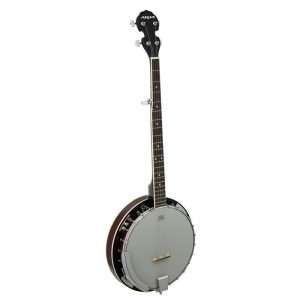  ARIA SB-10 |   ARIA ABU-1 |




